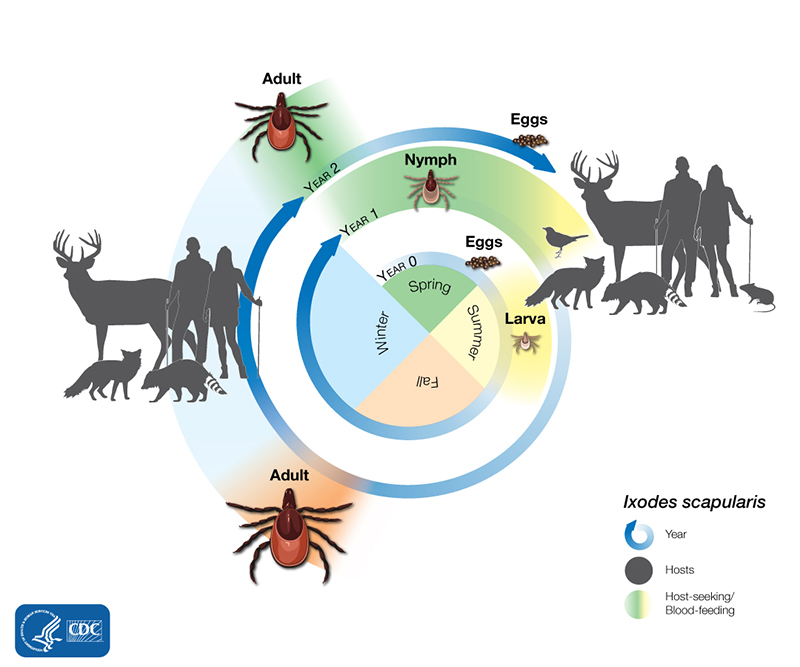Tick Surveillance
Ixodes scapularis

Estimated distribution of areas where the blacklegged tick (Ixodes scapularis) could survive and reproduce (yellow), and counties where established populations have been documented (red). Counties classified as “established” are those where six or more I. scapularis of a single life stage or more than one life stage of the tick were collected in the county within any 12-month period.

The lifecycle of Ixodes scapularis ticks generally lasts two years. During this time, they go through four life stages: egg, larva, nymph, and adult. After the eggs hatch, the ticks must have a blood meal at every stage to survive. Blacklegged ticks can feed from mammals, birds, reptiles, and amphibians. The ticks need a new host at each stage of their life.
Ixodes pacificus

Estimated distribution of areas where the Western blacklegged tick (Ixodes pacificus) could survive and reproduce (yellow), and counties where established populations have been documented (red). Counties classified as “established” are those where six or more I. pacificus of a single life stage or more than one life stage of the tick were collected in the county within any 12-month period.

The lifecycle of Ixodes pacificus ticks generally lasts three years. During this time, they go through four life stages: egg, larva, nymph, and adult. After the eggs hatch, the ticks must have a blood meal at every stage to survive. Blacklegged ticks can feed from mammals, birds, reptiles, and amphibians. The ticks need a new host at each stage of their life.
Public Use Dataset
Status for Ixodes scapularis and Ixodes pacificus by county in the contiguous United States:
- Counties classified as “established” are those where six or more ticks of a single life stage or more than one life stage of the tick were collected in the county within a 12-month period.
- Counties classified as “reported” are those where less than six ticks of a single life stage were collected in the county within a 12-month period.
- Counties classified as “no records” should not be interpreted as the tick being absent. No records could arise either from a lack of sampling efforts, lack of tick collection during sampling efforts, or lack of reporting or publishing the results of sampling efforts.
Established and reported records of I. pacificus and I. scapularis through Dec. 31, 2019 excel icon[XLS – 194 KB]––Right–click the link and select “save”.